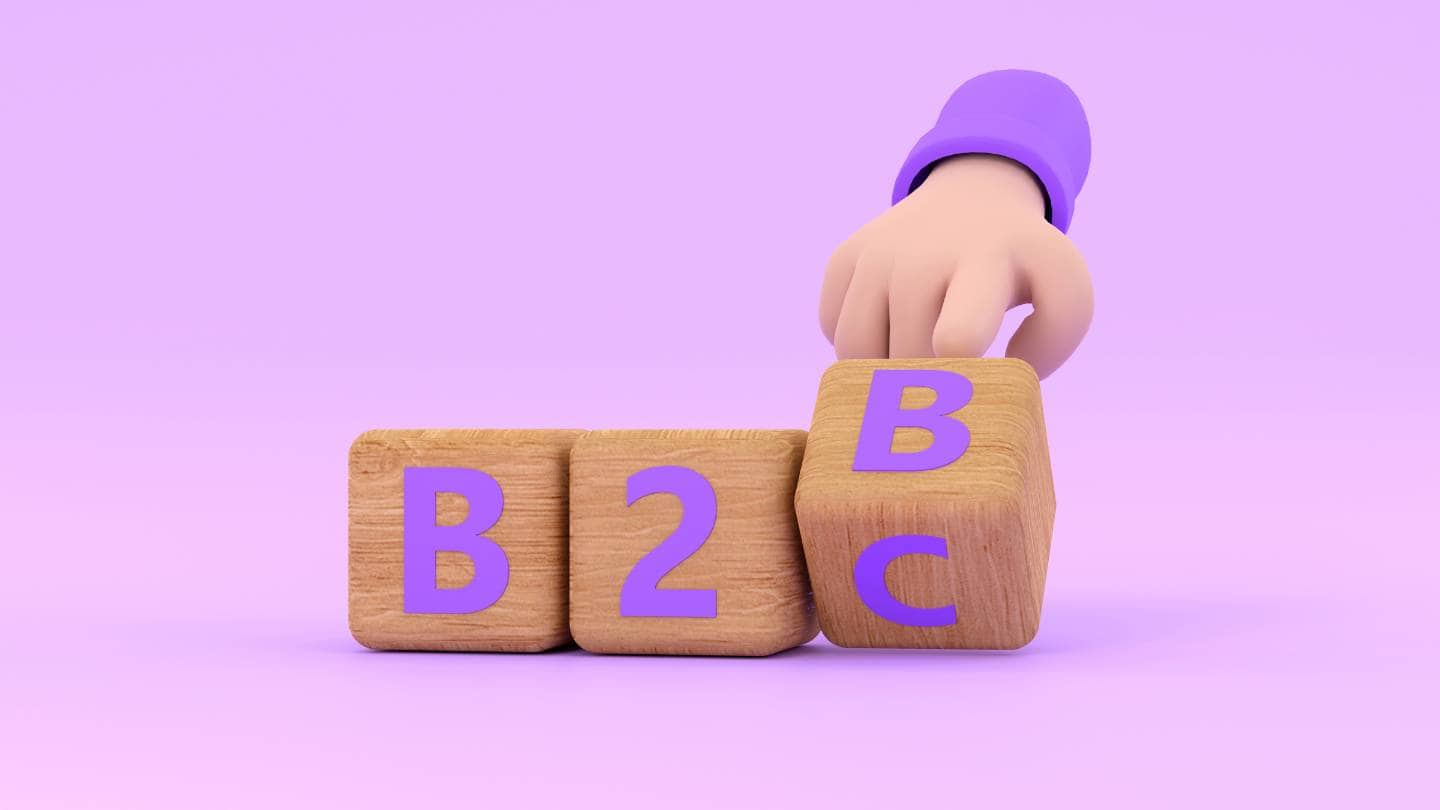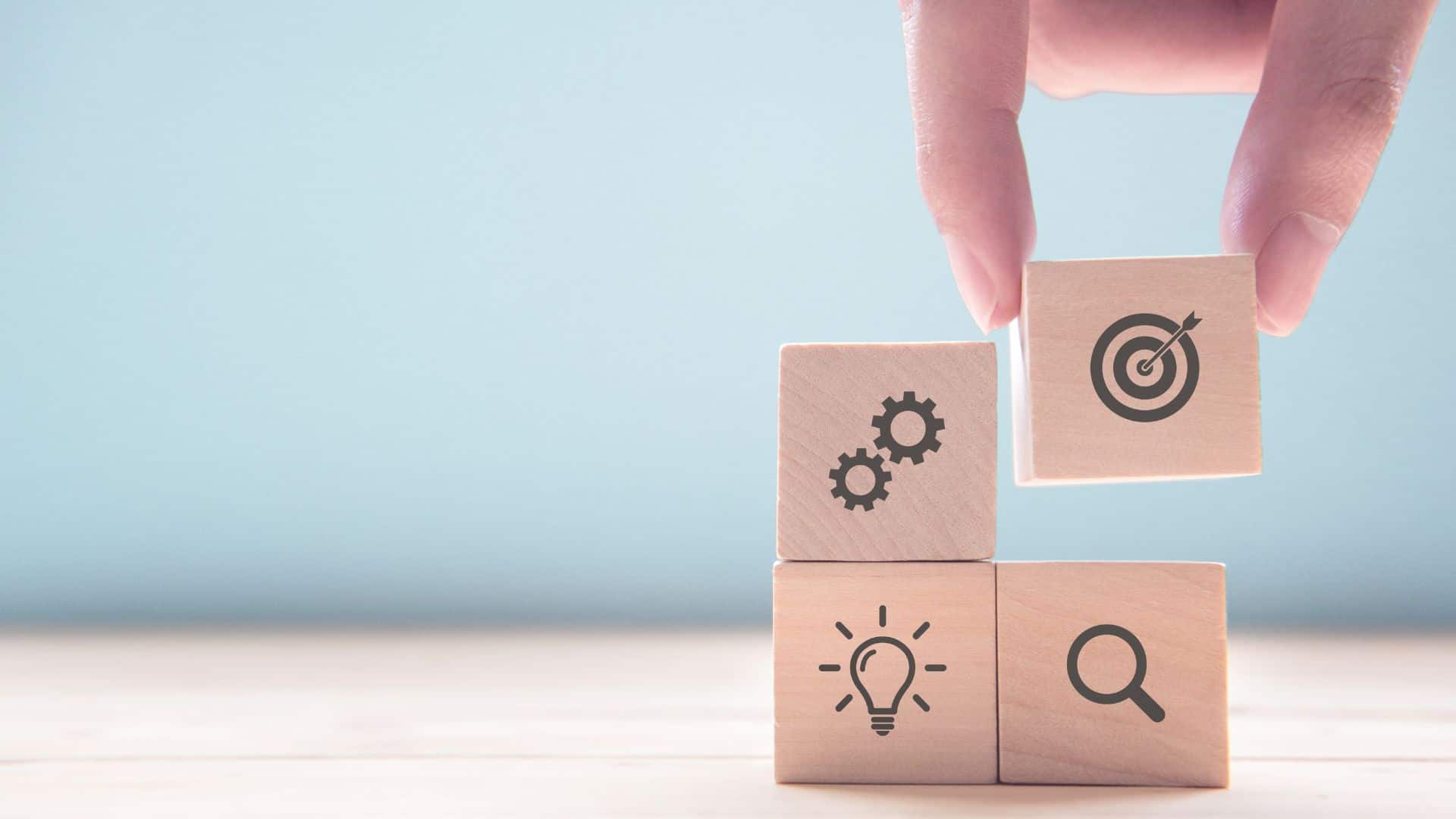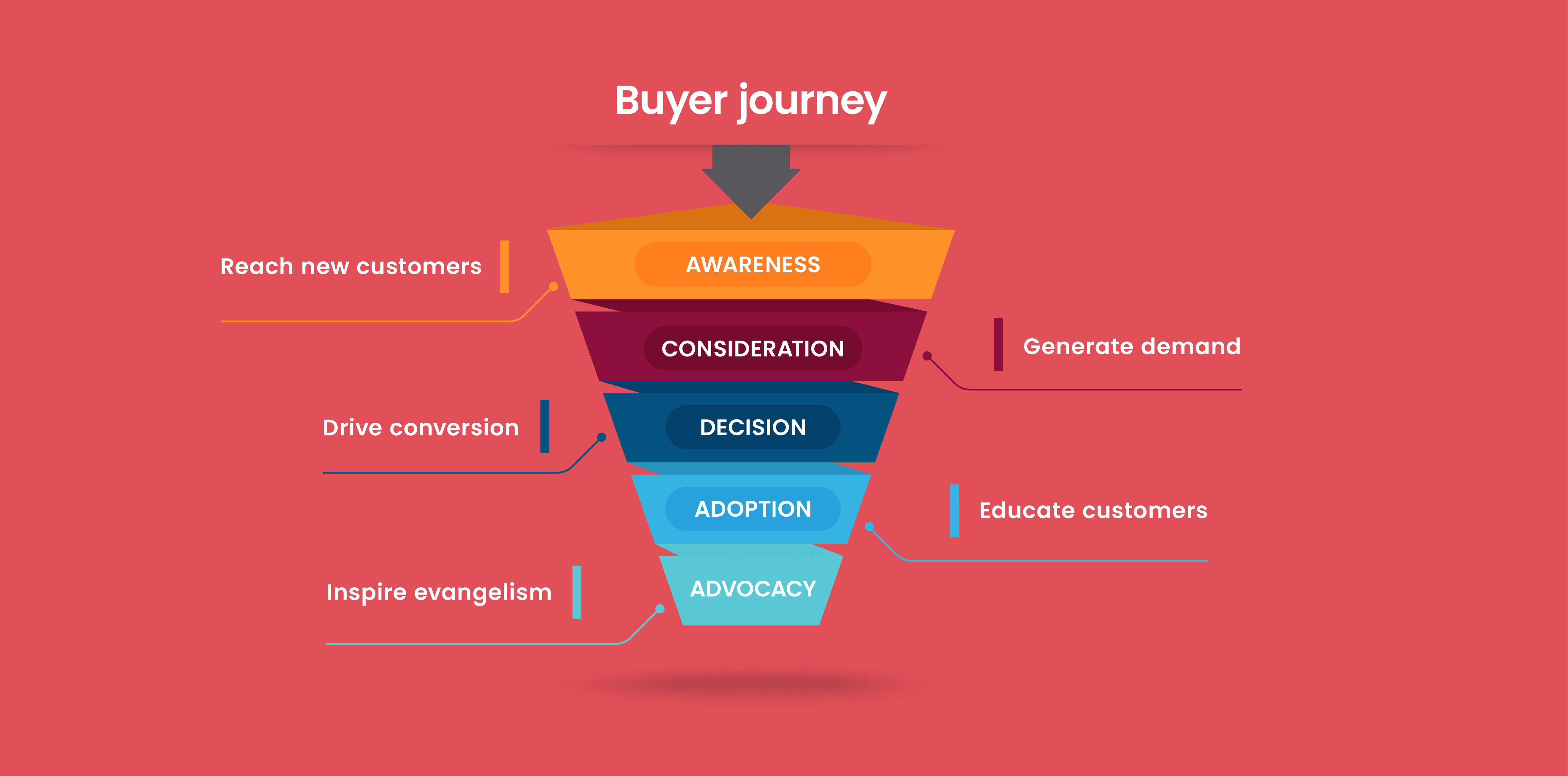Common B2B Marketing FAQs:
What are types of B2B audiences I can market to?
There are five types of B2B buyers:
- Producers
- Resellers
- Service providers
- Governments
- Institutions
What social media platform is best for B2B marketing?
Put simply, the best places for you to market your products and services are where your buyers spend most of their time. This will become evident when creating your Ideal Customer Profiles (ICPs).
As a good rule of thumb, however, B2B audiences love LinkedIn. It’s where they expect to make relevant connections to their job role and industry, so your outreach won’t feel completely out of place, if you do it right.
Other good options are Facebook, Instagram, YouTube, and TikTok if appropriate. X (formerly Twitter) may still be useful for your industry, but this platform no longer has the power it once did since being purchased by Elon Musk in 2022.
Is B2B marketing more difficult than B2C marketing?
It’s not really a question of difficulty, as each discipline has its own nuances that require unique approaches and strategies. The key differences are the length of the buyer journeys and the messaging your content needs to address in order to cut through to the decision-makers.
How can I stay up to date on the latest B2B marketing trends?
B2B marketers can stay informed by following industry news, attending conferences and workshops, networking with peers, participating in online forums and communities, and investing in ongoing education and training opportunities.
In fact, we offer fortnightly emails that update you on the latest insights and news from around the B2B marketing world – which might be the perfect place to start! Simply email info@flamingostrategies.co.uk to ask to be added to the list.
What is account-based marketing?
Account-based marketing (ABM) is a B2B marketing strategy that focuses on targeting high-value accounts in a specific market or business. This strategy uses personalised campaigns designed to engage each account, basing the messaging on those accounts' specific pain points and needs.
Over the past decade, B2B marketing has really found its footing as a distinct discipline, one that requires a strategic approach to stand out in the crowded digital landscape.
As B2B marketing experts, we wanted to offer some insights to help businesses like yours with this handy B2B marketing guide for 2024.
Stay ahead of the curve with the most up to date strategies that will engage your target audience, drive growth, and unlock the full potential of your marketing activities.

What is B2B marketing?
Business-to-business (B2B) marketing refers to marketing products or services to other businesses and organisations. Traditionally, B2B marketing would focus on being more informational, professional and straightforward whilst business-to-consumer (B2C) marketing often targets the emotional aspect of a person’s purchasing decisions.
However, as B2B marketing has evolved, the lines between the two have started to blur more and more. Yes, businesses purchasing decisions are based on the bottom-line revenue impact, but what marketing experts have started to capitalise on is that it’s still a person who makes that decision – and so therefore emotion is still a key driver when it comes to looking for a supplier.

Understanding the B2B marketing industry in 2024
A 2023 survey from Statista found that, among B2B marketers worldwide, 43% of respondents were planning to increase their B2B content marketing spend in the following 12 months – out of which 13% planned to increase it by more than 9%.
The B2B marketing landscape is continually evolving, shaped by emerging technologies, changing consumer behaviours, and market trends.
In 2024, businesses must integrate digital marketing channels, data analytics, and personalised experiences to forge meaningful connections with their audience.
From content marketing and social media engagement to email automation and account-based marketing, there are a wide range of tools at your disposal.

What are the main components of a B2B marketing strategy?
A successful B2B marketing strategy needs a solid plan as a foundation and then continuous optimisation. Here are some of the main components you will need to consider when developing your B2B marketing strategy:
Target audience:
The first step in any marketing strategy, both B2B and B2C, is clearly defining your target audience.
Semrush's State of Content Marketing 2023 report found that audience research is a leading factor for content marketing success, with 47% of respondents attributing their success to researching their audience.
Use your existing clients to uncover data-driven insights that help you understand their needs, pain points, and aspirations. Armed with this knowledge, you can tailor your strategy and messaging to new prospects, offering value at every touchpoint along their buyer journey.
Content marketing:
The key to content marketing is to NOT sell yourself. Now this might seem counterproductive, but the best utilisation of content marketing is to offer something useful or valuable for your audience in order to build your brand up as a trusted source.
Content marketing can take many forms, including blog posts, infographics, case studies, white papers, tutorials or educational videos.
Digital presence:
A strong digital presence is key to keeping your B2B business front of mind for any potential clients. This includes paid ads, search engine optimisation, and a well-designed website.
This also works hand in hand with your content marketing as sharing valuable content across your social media channels is a great way to grow your network through organic interest and engagement.

How to create a B2B marketing strategy that gets results?
1. Identify your B2B buyer
An essential first step in your B2B marketing strategy is outlining and defining your target market. A great exercise for this is to create your ideal customer profile/s (ICP).
This consists of a brief description of the perfect company you want to target for your product or service. You should consider not just what makes a business perfect for your solution, but also what you are looking for in a long-standing client.
While of course you will want a client who can provide enough financial value to you, it is worth being mindful of other ways they could help you too – e.g. perhaps they are well connected so could be a great referrer or are they likely to be happy to leave you a testimonial, form a successful case study, or provide future partnerships or opportunities?
2. Understand your B2B buyer journey
Your B2B buyer journey is the complete process your ICP will experience, from the initial awareness of your brand to the research and evaluation of your solution, right the way through to signing the contract.
A typical B2B buyer journey will look something like this:

This is where B2B and B2C marketing start to differ from one another as the purchasing decision for B2B clients can be much longer, often requiring the go-ahead from multiple stakeholders who may have different goals and targets.
Research from Databox reports the average B2B sales cycle takes more than two months to complete. And that number can drastically increase when considering the entire buyer journey. It's not uncommon for a B2B client to take up to 12-months to go from no awareness of your brand to agreeing a purchase decision.
3. Conduct competitor research
Sure, once you’ve identified your target market, created your ICPs and know exactly what pain points to address, you could go out and start your B2B marketing. However, you would be missing a crucial step that is first seeing how your competition is going about theirs.
What messages are they using? What are the types of content they are seeing success with? And what can you do differently to differentiate your brand from the noise and stand out as the obvious choice for prospects?
Competitor research tools are a great place to start. They can help you explore what keywords your peers are targeting, where they currently rank in terms of SEO and identify suitable backlinks to help inform your content strategy and make sure you're appearing alongside – and eventually above them – in search results.
If you’re interested in learning more about exactly what SEO is and how best to optimise your B2B marketing strategy see the best results, click here to read our blog.
4. Plan your outreach and content
It’s essential to remember that with B2B marketing you’re still communicating to individuals, even though they represent their company. Effective B2B marketing pairs both rational logic (prospects will evaluate whether you are good value for money, whether you have a good track record, whether you have worked with similar clients before etc.) with an emotional connection (is there a personality match, does their culture align with yours etc.). Being personal works! It’s what sets you apart from other businesses.
With the lines between B2B and B2C becoming more and more blurred, incorporating B2C approaches can be utilised within your B2B marketing strategy.
Implementing more personalised and human-centric marketing is a great strategy that works for both disciplines. A personalised approach can be the difference between a potential client opening your email, newsletter or blog over one of your competitors – getting your foot in the door and letting your messaging speak for itself.

As we've already identified, the B2B buying journey is much longer than a B2C one. Therefore, you need content to engage potential clients at every stage of your marketing funnel.
People will have different needs and concerns based on where they are along their buyer journey:
- Top of funnel (Awareness) – This is where people start to learn about your business and its products or service offerings. Here you want to utilise value-driven content that can be shared across your social media posts, blogs, infographics and podcasts.
- Middle of funnel (Consideration) – At this stage, people are starting to consider your product or service as an option. This is where you can start to provide detailed solutions to specific problems they might be experiencing. Guides, webinars, product feature pages, product comparisons and live video are some examples of content you can create.
- Bottom of funnel (Decision) – All of your previous content has answered the questions a potential client needs to make a purchasing decision and is ready to convert. Content like customer case studies, pitch decks, proposals and website pricing pages will give all the last bits of information a prospect needs to make their final purchasing decision.
5. Track, measure and optimise
The last step to keep in mind is that your B2B marketing strategy is a fluid process. Just because you’ve got your campaign live doesn’t mean your content should stay exactly as is.
As we mentioned right at the start of this guide, the B2B marketing landscape is continually evolving, shaped by emerging technologies, changing consumer behaviours, and market trends. As such, your B2B marketing strategy should also be continually evolving and the best way to inform this is by tracking your results.
A B2B marketer's best friend is data. As much as we like to think of ourselves as creatives, which we are (don't let anyone tell you any different), we also need to juggle this alongside being obsessed with data and the results that are presented to us.
Marketing can’t exist in a vacuum. Tracking clicks, open rates, impressions, engagement etc. is how we can tell what we’re doing is actually getting results.
A great strategy to directly test the effectiveness of your messaging is by split testing, or AB testing. This is where you use two different approaches to target the same group and see how each performs.
Let’s say you have your contact list who you want to reach out to via email but aren’t sure the best way to approach them is. Well, take that list, split it in two and send them two different types of messages – and that’s pretty much it... almost.
The next step is reviewing the data presented and optimising your messaging going forward based on the results of your test.
If you take anything away from this guide, I hope that it’s that B2B marketing isn't just about transactions between companies; it's about connecting with individuals who drive those decisions.
Your whole strategy should focus around creating meaningful experiences that resonate with your audience and the rest should fall into place. If you’d like to discuss any of the above with our marketing experts, feel free to get in touch with us here.
